Completed Project: Safety Risks of Alternative Powered Vehicles on Chemical Clusters - Phase 1
Description
Many (petro)chemical companies are located on industrial estates and chemical clusters. A lot of transport (of hazardous substances) takes place on these sites. The transport sector is becoming greener, which means that alternative fuels are being used more and more. Site managers, but also individual companies and their safety advisors, want a better insight into (possible) new safety risks of trucks that are powered by 'sustainable' fuels. These include LNG, CNG, hydrogen and battery-electric. The current Brzo legislation and regulations, however, say nothing about the (permitted) type of propulsion of trucks on such industrial sites. Three phases are planned for the implementation. In phase 1, a study will be carried out of existing regulations and procedures as they may already be used by BRZO/BEVI companies and chemical clusters.
Purpose
The aim of the study is to gain insight into the (additional) safety risks of 'alternative' powered vehicles on (petro)chemical sites and to advise on proportional safety measures for road transport of goods (tanks and general cargo) on company premises. Alternative powered vehicles are defined as vehicles powered by electricity (batteries), liquefied natural gas (LNG), compressed natural gas (CNG), or hydrogen (H2). These are scenarios for trucks.
Expected result
Participants gain insight from Phase 1 into what is known in the literature about regulations, policies and experiences regarding the safety risks of vehicles at industrial sites that use LNG, CNG, or H2 as fuel, or are battery-electric powered. The study includes:
- Exploration of the literature and the possible existing (policy) frameworks (Netherlands, Germany, Belgium,...) regarding this issue.
- Exploration of laws and regulations as well as possible guidelines that already exist e.g. at filling stations for this purpose.
- Exploration of possible company guidelines in this and site guidelines (chemical clusters, port companies).
- Exploration of and, where useful, connection to relevant platforms such as ROVERR, (Rotterdam-Rijnmond), Hazardous Substances Incident Management Working Group, Safe Energy Transition Steering Group of the Dutch Fire Brigade and LEC Fire Brigade.
| Date Initiation | September 2021 |
|---|---|
| Risk theme | Risk | Control | Assurance / Security Risks Energy Transition |
| User group | ----- |
Outcome
This study was carried out by the Netherlands Institute for Public Safety on behalf of the Ministry of Infrastructure and Water Management, Safety Delta Nederland, VNCI, VNPI, VOTOB and Chemelot companies. In addition, the National Expertise Centre for the Fire Service shared knowledge. Many (petrochemical) companies are located on industrial estates and chemical clusters. A lot of transport (of hazardous substances) takes place at these sites. Now that the transport sector is becoming greener, this means that alternative fuels are increasingly being used. The number of alternatively powered lorries with a mass in excess of 3.5 tonnes is modest for the time being: in 2021 in the Netherlands almost 1900 (0.83% total) and over 31000 in Europe (0.34% total). In 2021, three incidents involving alternatively powered trucks were recorded in the Netherlands. A literature search based on public sources via the Internet showed that there are no regulations in the Netherlands within the framework of the Brzo regarding the use of alternative propelled vehicles. Also in the wider context (EU, USA), this search did not yield any results with regard to regulations for the use of alternative-driven vehicles (including trucks) at specific (chemical) sites. There are, however, national and international requirements with which alternative vehicles must comply (vehicle requirements), there are rules for filling stations with alternative fuels and there are guidelines for incident response. There is also ample scientific literature on the hazards and risks of alternative fuels and alternative propelled vehicles. This information is often used when issuing permits, for determining measures or for calculating safety distances. In Europe, initiatives are being developed that address the safety of using alternative propelled vehicles at locations where hazardous substances are present. In addition, there are some company-specific analyses and procedures regarding the use of alternative powered vehicles on sites.
A follow-up study is underway: Safety Risks of Alternative Powered Vehicles on Chemical Clusters - Phase 2 - Scenarios. Incident scenarios will be developed. These will help to gain insight into the extent of any new risks at the site and in the immediate vicinity.


